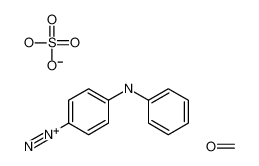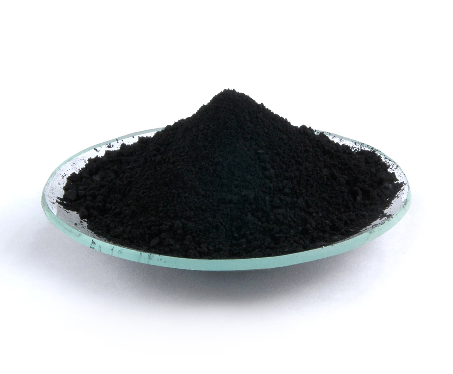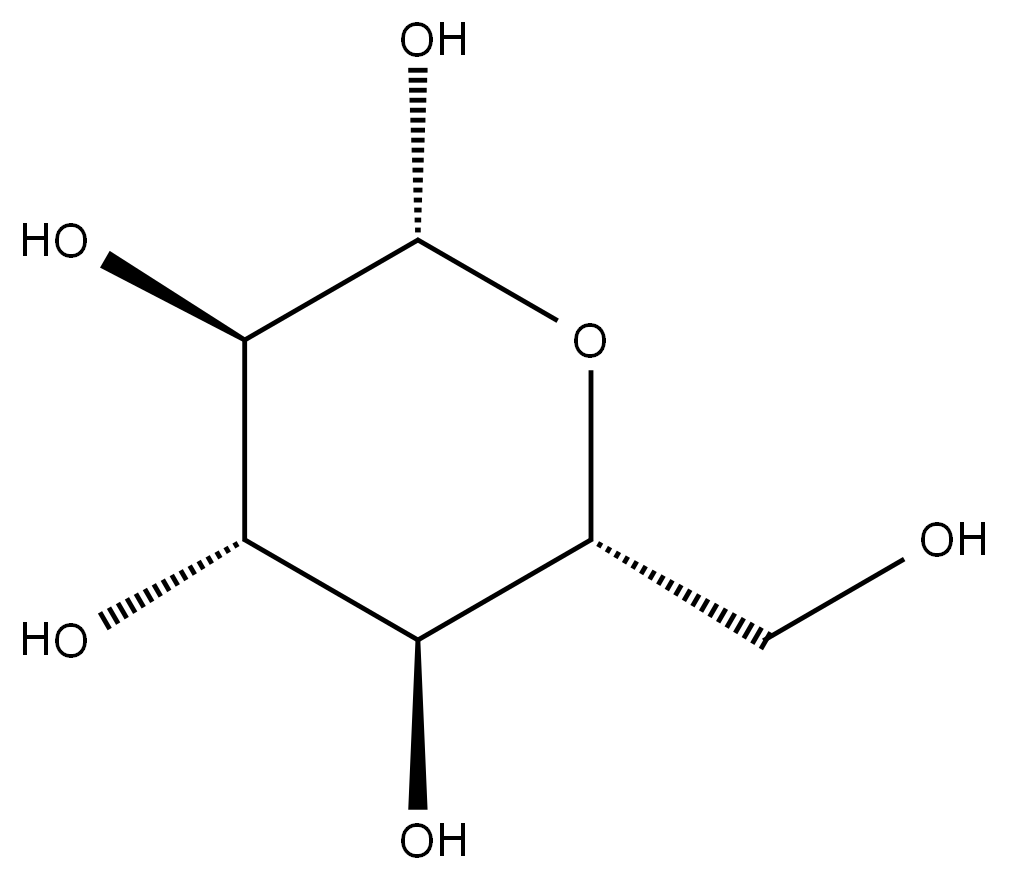Isopentane literature
Effect of External Surface Diffusion Barriers on Platinum/Beta-Catalyzed Isomerization of n-Pentane
Hu, Shen,Liu, Junru,Ye, Guanghua,Zhou, Xinggui,Coppens, Marc-Olivier,Yuan, Weikang
, p. 14394 - 14398 (2021)
We have developed a generalizable strategy to quantify the effect of surface barriers on zeolite catalysis. Isomerization of n-pentane, catalyzed by Pt/Beta, is taken as a model reaction system. Firstly, the surface modification by chemical liquid deposition of SiO2 was carried out to control the surface barriers on zeolite Beta crystals. The deposition of SiO2 leads to a very slight change in the physical properties of Beta crystals, but an obvious reduction in Br?nsted acid sites. Diffusion measurements by the zero-length column (ZLC) method show that the apparent diffusivity of n-pentane can be more than doubled after SiO2 deposition, indicating that the surface barriers have been weakened. Catalytic performance was tested in a fixed-bed reactor, showing that the apparent catalytic activity improved by 51–131 % after SiO2 deposition. These results provide direct proof that reducing surface barriers can be an effective route to improve zeolite catalyst performance deteriorated by transport limitations.
Single-Step One-Carbon Ring Homologation of Cyclic and Polycyclic Hydrocarbons via Their Methyl Alcohols or Carboxylic Acids with Sodium Borohydride/Triflic Acid
Olah, George A.,Wu, An-hsiang,Farooq, Omar
, p. 1452 - 1453 (1989)
-
Ir/Pt-HZSM5 for n-pentane isomerization: Effect of iridium loading on the properties and catalytic activity
Setiabudi,Jalil,Triwahyono
, p. 128 - 135 (2012)
The effects of iridium loading on the properties of Ir/Pt-HZSM5 and n-pentane isomerization were studied. XRD, IR, and NMR results indicated that increasing iridium loading did not much change the properties of catalysts, but eliminated the perturbed silanol groups at 3700 and 3520 cm-1, whereas IR and ESR spectroscopy confirmed that increasing iridium loading continuously decreased the permanent Lewis and Bronsted acid sites and inhibited the formation of protonic acid sites induced by hydrogen. At low iridium loading (0-0.3 wt%), cracking process proceed through dimerization-cracking step, whereas high iridium loading (0.5-2.0 wt%) reduces the contribution of dimerization-cracking step and promotes the contribution of hydrogenolysis. The excessive amount of iridium loading, with the presence of a low amount of active protonic acid sites and hydrogen gas, accelerated the hydrogenolysis process. The activity of Ir/Pt-HZSM5 was marginal in the absence of hydrogen, showing the dependence of activity on promotive effect of hydrogen.
Catalytic activity of H-forms of zeolites in the isomerization of supercritical n-pentane and their physicochemical properties
Bogdan,Koklin,Kazanskii
, p. 736 - 742 (2010)
The acidic properties of the H-forms of zeolites ZSM-5, Beta, Y, and mordenite are studied by diffuse reflectance IR spectroscopy using n-pentane as a probe molecule. The decreasing order of Bronsted acid site strengths is constructed. The isopentane selectivity in n-pentane isomerization under supercritical conditions (260°C, 130 atm) increases in the order H-ZSM-5 < H-Beta < H-mordenite(11) ≈ H-Y with decreasing strength of Bronsted sites. Catalytic data are analyzed jointly with the results of physicochemical studies of H-mordenite (temperature-programmed ammonia desorption, benzene adsorption, and IR spectroscopy). Under the supercritical conditions, the conversion of n-pentane on mordenite is determined by the total acidity of the zeolite and also by the accessibility of the acid sites inside the zeolite channels to the reactant.
Skeletal Isomerization of n-Butane over Caesium Hydrogen Salts of 12-Tungstophosphoric Acid
Na, Kyutae,Okuhara, Toshio,Misono, Makoto
, p. 367 - 374 (1995)
Skeletal isomerization of n-butane to isobutane has been studied with a flow reactor, mainly at 573 K, over caesium hydrogen salts of 12-tungstophosphoric acid (trihydrogen phosphododecatungstate), CsxH3-xPW12O40.The activity was highly dependent on the caesium content, being a maximum for x = 2.5 where the number of acid sites on the surface was greatest.The initial rate was first order with respect to the butane pressure (ca. 0.05-0.5 atm) at both 423 and 573 K on Cs2.5H0.5PW12O40*Cs2.5H0.5PW12O40 was found to be much more active and selective (83percent cf. 60percent) than SO4(2-)/ZrO2 at the steady state at 573 K.H-ZSM-5 showed a higher activity than Cs2.5H0.5PW12O40 and SO4(2-)/ZrO2 but the selectivity was only 14percent.Cs2.5H0.5PW12O40 is a promising catalyst for this reaction and the low deactivation of Cs2.5H0.5PW12O40 is probably responsible for the high catalytic activity.
-
Mavity et al.
, p. 2374 - 2379 (1948)
-
Isomerization of n-pentane over platinum promoted tungstated zirconia supported on mesoporous SBA-15 prepared by supercritical impregnation
Cheng, Soofin,Lee, Wenchao,Yang, Chieh-Chao
, p. 409 - 420 (2021)
Tungstated zirconia was supported on mesoporous SBA-15 by impregnation in supercritical ethanol. The resultant catalyst promoted with 1 wt% of Pt shows 100% selectivity of iso-pentane and two times higher conversion in n-pentane isomerization than the one prepared by conventional impregnation. Supercritical impregnation exerts no destruction of the porous silica and offers better dispersion of tungstated zirconia than conventional impregnation. Optimized loading of WO3/ZrO2/SBA-15 is 20/40/40 wt%, which infers to 2.4 W-atoms/nm2 and 8.9 Zr-atoms/nm2 dispersed on the SBA-15 support. Moreover, introducing a proper mole fraction of hydrogen in the reactants markedly improves the catalytic activity in n-pentane isomerization. The role of hydrogen was not only served as the reactants, it also acted to regenerate Br?nsted acid sites during n-pentane isomerization. However, overdose of hydrogen leaded to a leveling-off in the rate of isomerization and enhanced hydrogenolysis reaction. The in situ IR spectroscopic studies suggested that Br?nsted acid sites were the active centers for the isomerization. A reaction mechanism was, therefore, proposed that heterolytic fission of hydrogen and dehydrogenation of n-pentane took place over Pt. The secondary carbocation formed over Br?nsted acid sites was rearranged to a tertiary carbocation by methyl migration, followed by reacting with a hydride to generate iso-pentane.
Catalytic performance of nanostructured Pt/ZSM-5 catalysts synthesized by extended Charnell's method in hydroisomerization of n-pentane
Charchi Aghdam,Ejtemaei,Sharafi,Babaluo,Tavakoli,Bayati
, p. 155 - 164 (2019)
Na-ZSM-5 zeolite, synthesized by extended Charnell's method was used to prepare Pt/ZSM-5 catalyst for n-pentane hydroisomerization. The influence of ion exchange, alkaline treatment and method of platinum incorporation on the Na-ZSM-5 zeolite was investigated. It was found that the presence of Trien affected the physicochemical properties of the synthesized catalyst. The synthesized catalysts showed high performance so that the sample prepared in rotating mode at 24 h and Pt loaded via impregnation showed conversion and selectivity about 75 and 97%, respectively. Also, a maximum yield for this catalyst was achieved at 250 °C.
La-Ni modified S2O82-/ZrO2-Al2O3 catalyst in n-pentane hydroisomerization
Song, Hua,Wang, Na,Song, Hua-Lin,Li, Feng
, p. 61 - 64 (2015)
The LaNiS2O8 2?/ZrO2Al2O3 (LaNiSZA) was prepared and the effect of La and Ni on the structure and isomerization performance of catalyst was investigated. The addition of La could lead to a higher dispersion of metal and more acid sites. The addition of Ni can promote redox performance of catalyst and formation of Lewis acid sites. The highest isopentane yield of 66.5% at a lower reaction temperature of LaNiSZA can be attributed to the synergistic interaction between La and Ni.
-
Clark et al.
, p. 803 (1953)
-
Aluminum fluoride-supported platinum and palladium as highly efficient catalysts of n-pentane hydroisomerization
Machynskyy, Ostap,Kemnitz, Erhard,Karpinski, Zbigniew
, p. 592 - 602 (2014)
Catalytic isomerization of n-pentane was studied over novel high surface area (HS) aluminum fluoride supported palladium and platinum catalysts, prepared by the nonaqueous fluorolytic sol-gel synthesis. HS-AlF3 maintained well its nanoscopic, mesoporous, and highly acidic character at higher temperatures, up to 350 °C. Both Pt/HS-AlF3 and Pd/HS-AlF 3 catalysts, characterized by very small metal particle sizes (≈2 nm) maintained very good activity, stability, and selectivity towards isomerization (up to nearly 100 %) at up to 350 °C. Very strong acidity of HS-AlF3 is the prerequisite for isomerization but the presence of the metal is also essential to maintain a high conversion level. The effect of metal-acid balance in Pd/HS-AlF3 catalysts, important for bifunctional isomerization, was tested by screening three differently metal-loaded catalysts. The performance of the 0.5 wt % Pd/HS-AlF3 appeared as good as that of 2.0 wt % Pd. The properties of the HS-AlF 3 support, catalyst precursors, and catalysts were characterized by XRD, TEM, H2 chemisorption, and FTIR photoacustic spectroscopy of adsorbed pyridine, and NH3 temperature programmed desorption. The first three methods allowed evaluating the state of the metal in the reduced catalysts. The suppressed chemisorption of H2 must result from different factors, such as carbon presence in Pd introduced during catalyst synthesis and activation, metal-acidic support interaction, and, partially, metal encapsulation in AlF3 during sol-gel synthesis. Lewis and Bronsted acidity was detected in activated catalysts and both types of acid sites were assumed to play a role in bifunctional isomerization. NH 3 effectively blocks the strongest acid sites and drastically limits the overall catalytic performance. Introduction of water to the reaction system also degrades, but to a lesser extent, the Pd(Pt)/HS-AlF3 catalyst performance, most probably because of poisoning of only the strongest Lewis acid sites. A week-long performance: High surface area(HS) aluminum fluoride-supported palladium and platinum catalysts are used in the isomerization of n-pentane. The activity, stability, and selectivity of Pt/HS-AlF3 and Pd/HS-AlF3 catalysts is maintained at temperatures of up to 350 °C over reaction times of up to a week. Both Lewis and Bronsted acidity is detected in the activated catalysts, evidencing bifunctional isomerization. Copyright
IR study of iridium bonded to perturbed silanol groups of Pt-HZSM5 for n-pentane isomerization
Setiabudi, Herma Dina,Jalil, Aishah Abdul,Triwahyono, Sugeng,Kamarudin, Nur Hidayatul Nazirah,Mukti, Rino R.
, p. 190 - 199 (2012)
The Ir/Pt-HZSM5 catalyst was prepared by impregnation of iridium on Pt-HZSM5. The activity of Ir/Pt-HZSM5 was tested for n-pentane isomerization under hydrogen stream. The introduction of iridium did not change the bands observed at 3740, 3665 and 3610 cm-1 indicating that neither non-acidic terminal silanol groups nor acidic bridging hydroxyl groups interacted with the iridium. Additionally, the peaks corresponding to the perturbed silanol groups at 3700 and 3520 cm-1 decreased significantly. X-ray photoelectron spectroscopy (XPS) analysis revealed that the iridium is in the form of IrO2. 27Al MAS NMR confirmed the elimination of distorted tetrahedral aluminum. The presence of iridium slightly increased the acidity of Pt-HZSM5 and its selectivity for iso-pentane. Hydrogen adsorption FTIR indicated that iridium enhanced the formation of protonic acid sites which may participate in the isomerization, and inhibited the formation of hydroxyl groups at 3380, 3600 and 3680 cm-1 which may participate in the enhancement of the cracking reaction.
New Perspectives in the Formation of the Grignard Reagent
Peralez, Eric,Negrel, Jean-Claude,Chanon, Michel
, p. 5857 - 5860 (1994)
Inhibitors, in very low concentration, inhibit the reaction between 1-bromo-3-methylbutane and magnesium obtained by vaporization of metal.For such a magnesium derivative, the inhibitors cannot play the role of "killers" for active sites.A chain reaction for the formation of the Grignard reagent is proposed.
alpha , beta -SUBSTITUTED BIS(CYCLOPENTADIENYL)TITANACYCLOBUTANES AND THEIR ROLE IN PRODUCTIVE METATHESIS.
Straus,Grubbs
, p. 9 - 25 (1983)
The synthesis and reactions of the alpha , beta -disubstituted titanacyclobutanes, are reported. The cis isomer is the less stable and at room temperature isomerizes to the trans isomer and unidentified products. The cis- alpha , beta -dimethylmetallacycle produces a variety of C//1 to C//5 hydrocarbons upon thermal decomposition. Evidence for competitive cleavage of the cis- alpha , beta -dimethylmetallacycle to give a titanocene ethylidene or a titanocene methylene is presented. The mechanism of these olefin metathesis reactions is discussed in terms of the chemistry of the model intermediates, the cis- and trans- alpha , beta -dimethyltitanacycles.
Mechanisms of Methylenecyclobutane Hydrogenation over Supported Metal Catalysts Studied by Parahydrogen-Induced Polarization Technique
Salnikov, Oleg G.,Burueva, Dudari B.,Kovtunova, Larisa M.,Bukhtiyarov, Valerii I.,Kovtunov, Kirill V.,Koptyug, Igor V.
, (2022/03/15)
In this work the mechanism of methylenecyclobutane hydrogenation over titania-supported Rh, Pt and Pd catalysts was investigated using parahydrogen-induced polarization (PHIP) technique. It was found that methylenecyclobutane hydrogenation leads to formation of a mixture of reaction products including cyclic (1-methylcyclobutene, methylcyclobutane), linear (1-pentene, cis-2-pentene, trans-2-pentene, pentane) and branched (isoprene, 2-methyl-1-butene, 2-methyl-2-butene, isopentane) compounds. Generally, at lower temperatures (150–350 °C) the major reaction product was methylcyclobutane while higher temperature of 450 °C favors the formation of branched products isoprene, 2-methyl-1-butene and 2-methyl-2-butene. PHIP effects were detected for all reaction products except methylenecyclobutane isomers 1-methylcyclobutene and isoprene implying that the corresponding compounds can incorporate two atoms from the same parahydrogen molecule in a pairwise manner in the course of the reaction in particular positions. The mechanisms were proposed for the formation of these products based on PHIP results.







